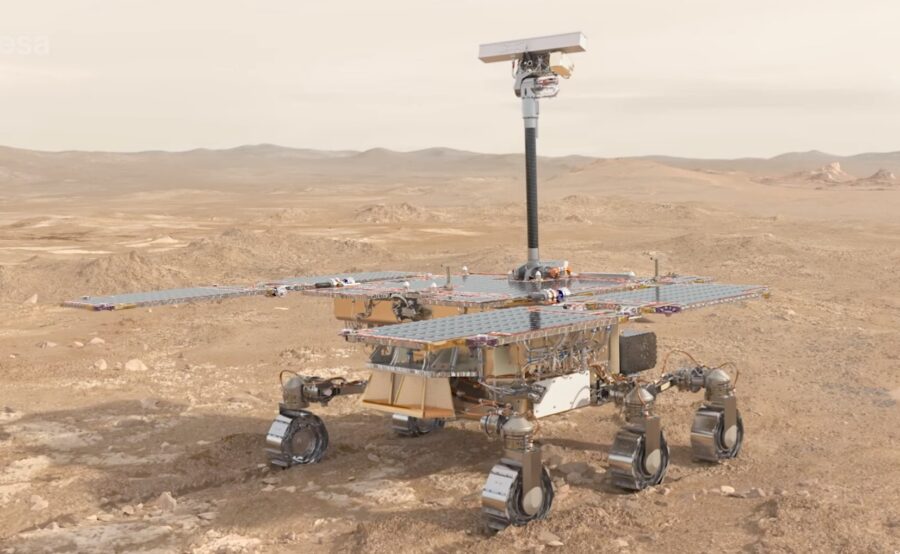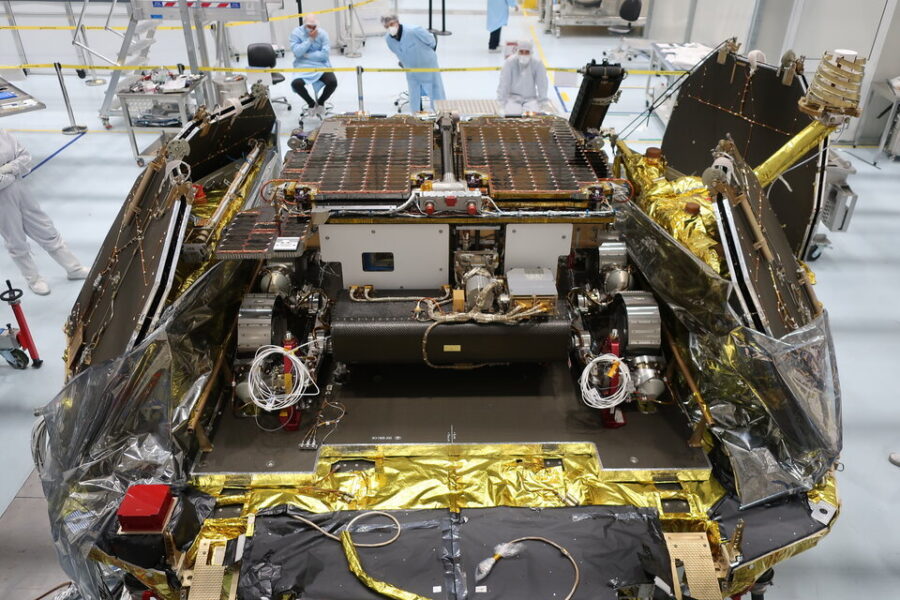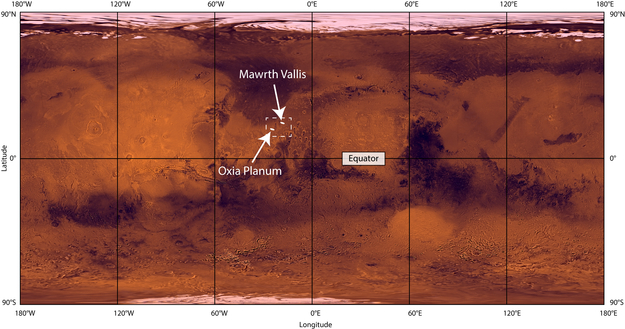The European Space Agency is working to get its ambitious Mars rover back on track after complex delays.

ESA
Europe’s first mission to Mars, the ExoMars Rosalind Franklin rover, has weathered delays due to technical issues, the COVID-19 pandemic, and the Russia-Ukraine War. Now, the mission is getting back on track as the European Space Agency (ESA) looks to NASA for help.
Originally, Russia was going to provide the Proton rocket that would have brought the rover to Mars, as well as the Kazachok landing platform that would have served as the rover's platform on the Martian surface. But then Russia invaded Ukraine, and within months everything changed. ESA formally terminated the mission's cooperation with Roscosmos, the Russian space agency, in July 2022.
As a result, ESA had to cancel the rover's launch, which had been scheduled for the fall, and rethink its options. NASA, which was originally part of the ExoMars mission but pulled out in 2012, may now step in again to help the mission move forward. The U.S. agency has requested $30 million to support the mission in FY2024, but the agencies are still working out longer-term costs.
The mission is now set to launch between October 5th and the 25th in 2028, allowing for a landing on October 28, 2030. “This is a delayed trajectory that will put us on Mars during northern hemisphere spring, without the risk of dust storms and with plenty of sunlight for the rover’s solar panels,” says Exomars project scientist Jorge Vago (ESA).
Before that date, there's a lot to do.
ESA will be building their own lander to take the rover to the surface. The agency plans to recover and reuse flight equipment that had been built for the Russian Descent Module. The rover had already been integrated with the Russian lander, all set for the fall 2022 launch. Now the European-built components — including a radar altimeter and onboard computer — need to be disentangled from the Russian-built lander, currently located in Turin, Italy.
That has proven problematic, as only Russia can extract those components, and no team has yet come to do so. ESA has requested the components be removed by the end of March.
The European-built lander will be fundamentally different from Russia's Kozachok platform. “The new lander will not offer any payload services. Its sole objective is to deliver Rosalind Franklin safely to the surface of Mars,” Vago says.
ESA hopes that NASA will provide engine elements to help the lander get to the Martian surface, and NASA has indicated its willingness to help. “The biggest challenge is to ensure that we can receive and integrate the elements coming from the U.S. into the lander early enough to have a chance to test the entire spacecraft properly,” says Vago. “There are new components we must learn to work with and it requires time to master things and make sure that software, avionics and elements work as they should.”

ESA
Pending funding approval, NASA will provide launch services and radioisotope heater units, required to keep the spacecraft warm on cold Martian nights. In the meantime, an infusion of 500 million euros ($540 million) from ESA's governing Ministerial Council will keep the project alive for the next three years.
However, there's a risk that delays could be costly in another sense: A prime example is the Galileo mission to Jupiter, which NASA had to delay for three years. As a result of extended storage, the spacecraft's main antenna refused to fully open post-launch, limiting the amount of data it could send home. Creative engineering ended up saving the mission. Time will tell if ExoMars's delays will affect the rover's mission.
The Rosalind Franklin Rover's Mission
There's a lot to look forward to when Rosalind Franklin begins to explore the Red Planet. ESA has selected the mission's landing site to be in Oxia Planum, which preserves remnants of the planet's wetter past. The rover is expected to drive up to 70 meters per Martian day, or Sol.

ESA
The rover is named after the pioneering 20th-century chemist and X-ray crystallographer Rosalind Franklin, whose insights were crucial to the discovery of DNA and RNA — fitting for a mission which will search for evidence of life on Mars. Among several instruments, the Rosalind Franklin will carry the Mars Organics Molecular Analyzer to conduct a highly sensitive search and characterization of organics on the surface. The rover will also carry a drill to sample the sub-surface, 2 meters (6 feet) down.
The rover and the lander that it will accompany it aren't Europe's first try for Mars. They make up the second phase of the ExoMars mission, which began with the Trace Gas Orbiter that launched in 2016 and is still operating in orbit around Mars.
It’s been a long and difficult road for the Rosalind Franklin, but it will all be worth it once the rover gets down to work on Mars.
Editorial note (March 30, 2023): Text edited to clarify that NASA will be providing landing engine elements, while ESA will be building the landing platform itself.
 1
1









Comments
PGT
March 20, 2023 at 6:30 pm
Rosalind Franklin -- thoughtful name choice.
You must be logged in to post a comment.
You must be logged in to post a comment.